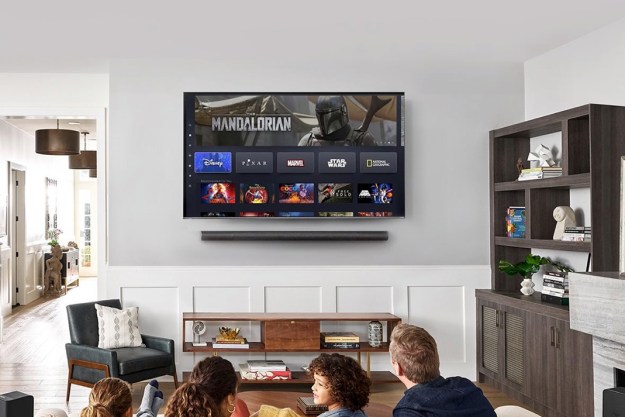While it doesn’t have a friendly moniker, the ISWF576 looks and feels like a premium product. The shiny metal grill and beveled metallic trim along the top panel gives the unit a polished finish. For a compact speaker, it’s heavier than it looks but feels durable and well-made. The speaker features on-board controls for playback, volume, track navigation, and six preset keys to store your favorite internet stations, allowing you to quickly change the channel if your phone is out of reach.
The speaker has an internal battery with an average of 6 hours of playtime depending on volume level, and it charges wirelessly on a low-profile base station. The portability factor conveniently lets you pick up your music and take it to another room, or if you’ll be out of Wi-Fi range, switch over to Bluetooth or Aux-in mode to keep playing your music on-the-go — though we wish the battery life was a bit longer.
The proprietary iLife Wi-Fi Control app is available for iOS and Android, though not desktop computers or laptops. It lets you mix and match up to six iLive speakers and link them to your Wi-Fi network to spread music throughout your home. As with other multiroom systems, the speakers can be used individually or grouped together to play the same music in a whole-home setup. Grouping the speakers from the app is a simple drag-and-drop operation and the speakers play perfectly in sync with no audible delay or echo. You can also stereo pair the speakers for true stereo playback.
In general, setting up the wireless connection was painless and the reliability solid; we experienced little if any lag or buffering, however, actual performance will vary depending on your network setup and usage. The speakers also consistently reconnected to our Wi-Fi network automatically after powering off and on during our evaluation.
The audio quality of the ISWF576 is impressive for a speaker in its price range. The sound is clean and bright up top, with impressive balance across the frequency spectrum. The speaker’s dual passive radiators reproduce tight, punchy bass with a fair amount of depth. Sporting four 1.75-inch full-range drivers, the speaker fills a small room easily, but it can distort at max volume so it’s best to keep the volume at moderate listening levels.
The iLive Platinum Wi-Fi speaker we evaluated is a definite contenders for budget conscious users looking for more affordable alternatives to ultra-premium multiroom audio systems. Along with the quad-driver speaker we reviewed, the brand also sells a dual driver speaker and a soundbar, which retail at $100 and $170 respectively. The Platinum ISWF576 is available for $150 on Amazon and elsewhere online now.


